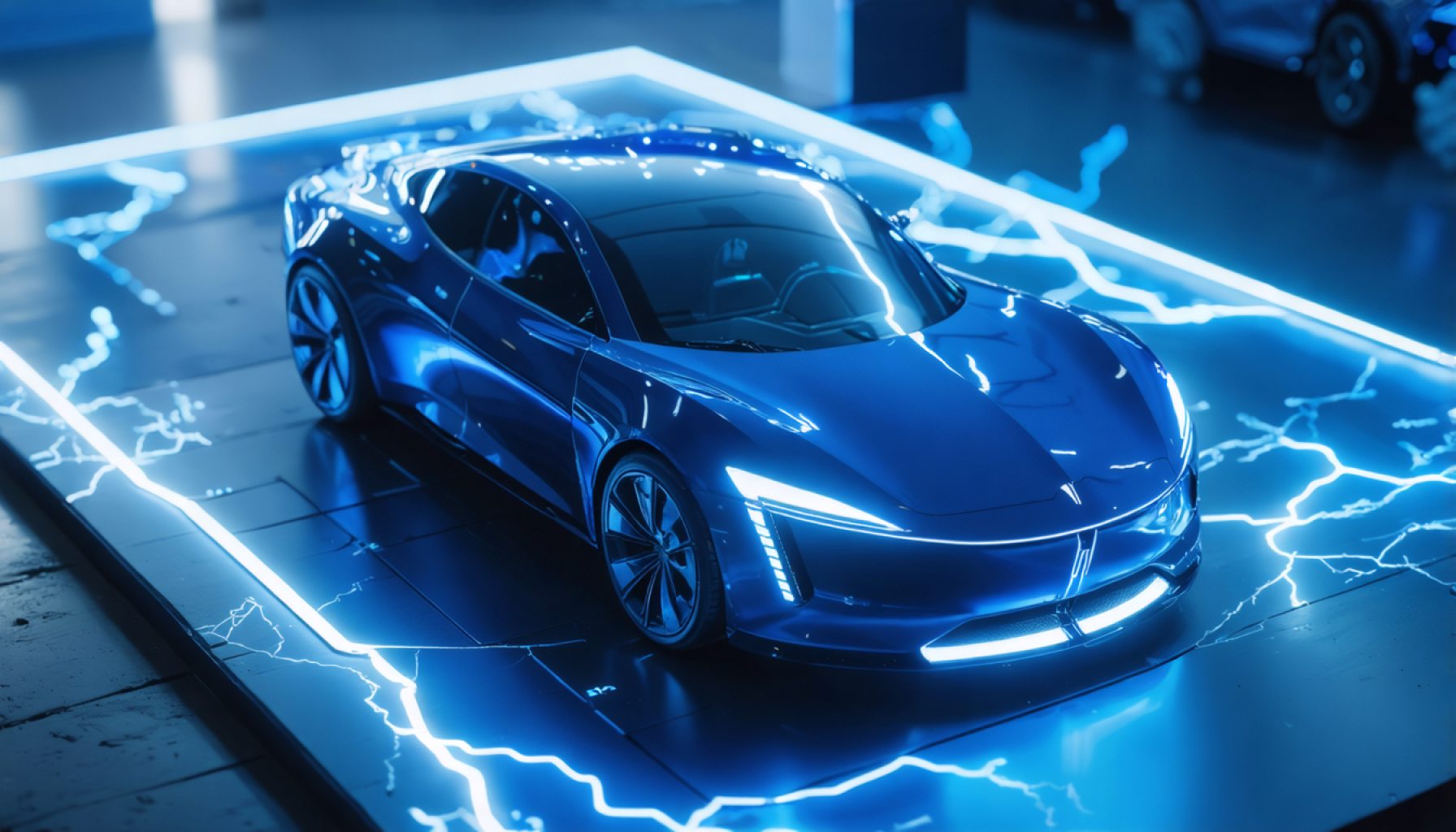- Stellantis engineers are advancing solid-state battery technology, promising an 18-minute charge time, a breakthrough for electric mobility.
- Solid-state batteries replace liquid electrolytes with a solid medium, offering faster charging, higher energy density, and longer range than lithium-ion batteries.
- This innovation enhances safety by reducing the risk of battery fires, addressing critical concerns in EV adoption.
- Electric vehicles, such as the Dodge Charger Daytona, will soon benefit from these advancements, making EVs more convenient and boosting their appeal.
- The shift toward solid-state batteries represents a significant step in promoting sustainability and transforming perceptions of EV viability.
- Stellantis’ commitment to innovative technology underscores a broader vision for an eco-friendly future with improved EV integration into daily life.
Nestled within the bustling corridors of innovation at Stellantis, engineers are on the verge of a technological breakthrough that could redefine electric mobility. A solid-state battery boasting a remarkable 18-minute charge time shines brightly on their horizon—a potential game-changer in a world increasingly hungry for sustainable solutions.
Consider the landscape today: electric vehicles (EVs) are celebrated as vanguards of environmental responsibility, yet they remain tethered to the inconvenience of prolonged charging. Enter Stellantis, with its bold promise to electrify the industry not just with speed, but resilience and safety.
In essence, solid-state batteries are poised to leapfrog their lithium-ion counterparts. By swapping liquid electrolytes for a solid medium, they stand firm against overheating and boast superior energy density. This means not only faster charging times but an extended driving range that whispers liberation to the range-anxious.
EV enthusiasts and casual consumers alike will soon encounter this innovation in vehicles such as the Dodge Charger Daytona. Imagine rolling onto an interstate rest stop, plugging in, and with a mere 18 minutes to stretch your legs, grabbing a quick snack, and easing back onto the highway with a full charge. This vision catapults Stellantis’ innovation beyond mere convenience, spotlighting it as a transformative shift in how we perceive EV viability.
Moreover, safety, often a silent concern in the electric debate, takes center stage here. These solid-state wonders promise a diminished risk of battery fires, a reassurance capable of tilting skeptics toward adoption.
While the technical dance of ions and electrons might seem abstract, its impact will be vividly real—streamlined commutes, less time idling at charging stations, and a smoother integration of EVs into busy lives. Stellantis’ audacious endeavor isn’t simply about faster, safer batteries. It’s a commitment to a sustainable future where cutting-edge technology energizes our journey toward ecological harmony.
This is the crux: as we stand on the cusp of this electrifying evolution, embracing such innovations propels us toward a cleaner, more connected world. The road ahead is illuminated by flashes of genius, like Stellantis’ pioneering work with solid-state technology, driving us ever closer to the sustainable horizon we seek.
Revolutionizing EV Charging: How Stellantis’ Solid-State Batteries Could Change the Game
Breaking Down Solid-State Batteries
Stellantis’ push towards solid-state battery technology is set to redefine the electric vehicle industry. Traditional lithium-ion batteries, which have been the mainstay of EVs, use liquid electrolytes and are hindered by longer charging times and safety concerns such as overheating and potential fires. Solid-state batteries replace these liquid electrolytes with a solid medium, leading to significant improvements.
Advantages of Solid-State Batteries:
1. Faster Charging Times: As indicated by Stellantis, these batteries can achieve an 18-minute full charge, which drastically reduces charging downtime.
2. Increased Energy Density: This results in extended driving ranges—potentially removing range anxiety for EV owners.
3. Enhanced Safety: With a lower risk of overheating and combustion, solid-state batteries offer greater safety assurances.
4. Longer Lifespan: The solid electrolyte minimizes dendrite formation, which is often responsible for the degradation of lithium-ion batteries over time.
How-To Steps: Integrating Solid-State Technology in EVs
1. Research and Development: Continuous innovation in materials science is required to optimize the solid electrolytes for commercial use.
2. Prototyping and Testing: Extensive lab testing to ensure durability and safety of new battery designs.
3. Scale-Up Production: Establishing manufacturing processes to produce solid-state batteries at scale.
4. Collaboration with Automotive Brands: Integrating these batteries into vehicles, starting with models like the Dodge Charger Daytona.
Real-World Use Cases:
– Urban Commutes: Shorter charging times allow for quick top-ups during short stops, perfect for city driving where charging stations are more frequent.
– Long-Distance Travel: The combination of faster charging and increased range supports longer drives without the need for extended stops.
Industry Trends and Insights:
– The global solid-state battery market is expected to grow significantly in the coming years, driven by the demand for safer, faster-charging EVs.
– Key players in the automotive industry are investing heavily in solid-state technology, indicating a shift towards these advanced batteries.
Controversies & Limitations:
While promising, solid-state batteries are not without challenges:
– High Production Costs: Currently, these batteries are more expensive to produce than traditional batteries.
– Material Challenges: Finding suitable solid electrolytes that are both effective and sustainable is an ongoing area of research.
Security & Sustainability:
Solid-state batteries are considered more environmentally friendly due to their reduced risk of fire and longer lifespan. Their development aligns with global sustainability goals and reduces the carbon footprint of the entire EV supply chain.
Conclusion and Actionable Tips:
– For EV Owners: Stay informed about upcoming models like the Dodge Charger Daytona that promise enhanced features with solid-state batteries.
– For Investors: Consider companies deeply invested in solid-state technology as they are poised to benefit from this market shift.
– For Enthusiasts: Follow the latest developments in solid-state battery research, as this technology may soon become the standard in electric mobility.
By embracing solid-state technology, Stellantis is not just revolutionizing EV performance; it is paving the way for a broader adoption of electric vehicles, fostering an eco-friendlier future. For more information on innovations by Stellantis and the future of the automotive industry, explore their official site: Stellantis.
